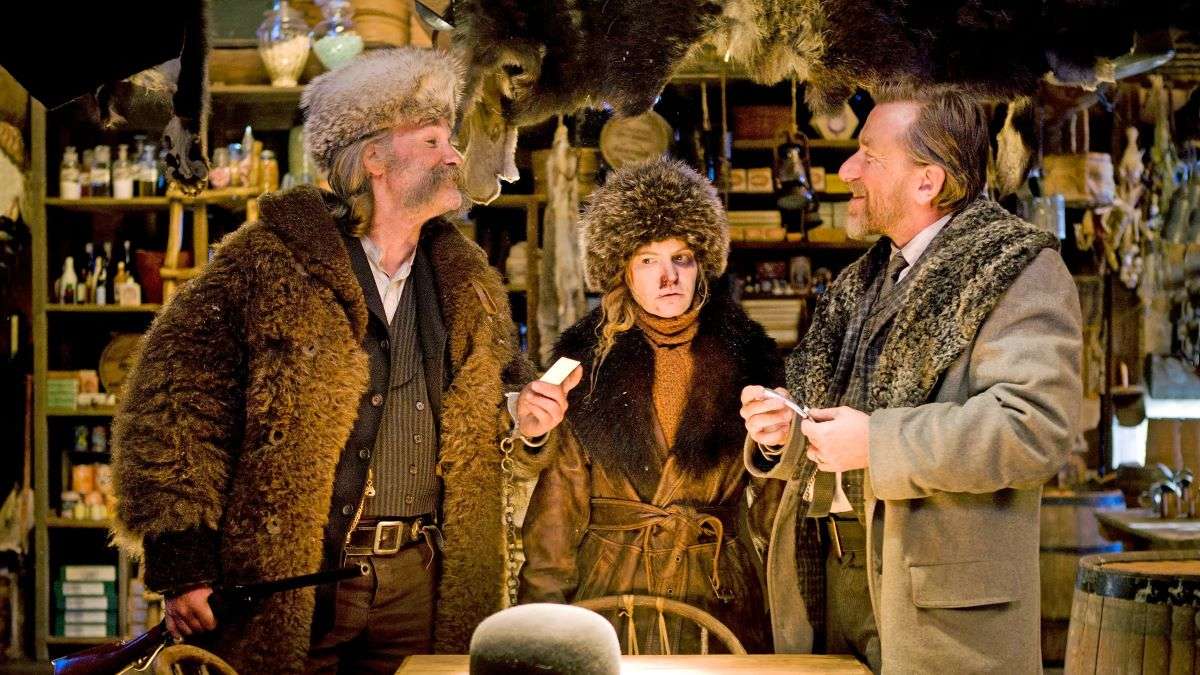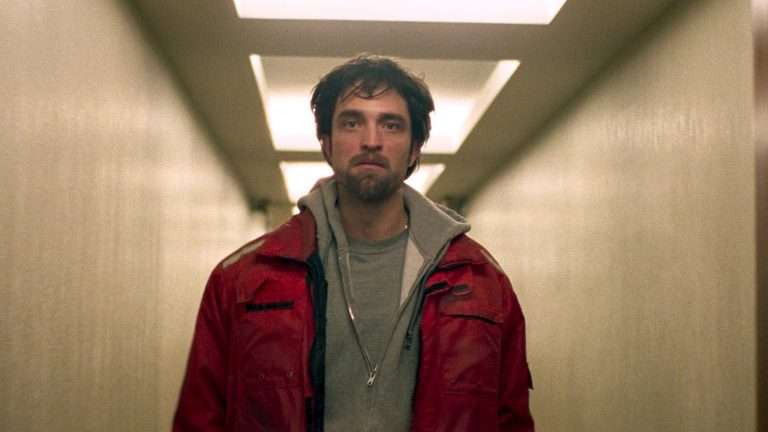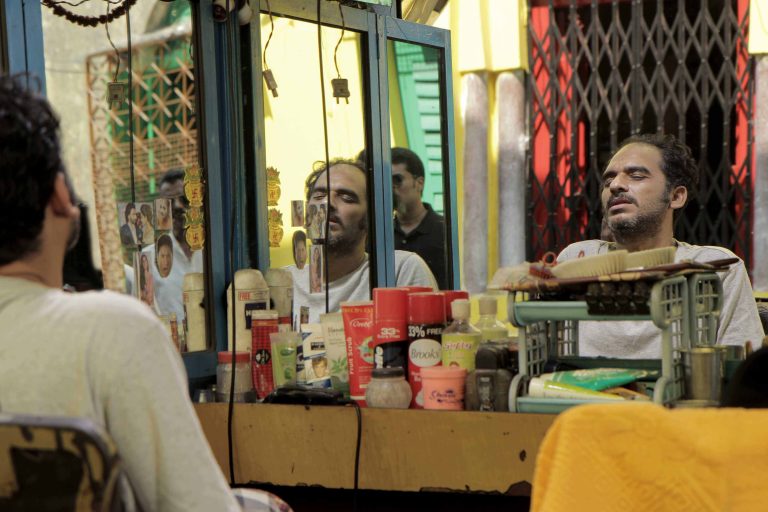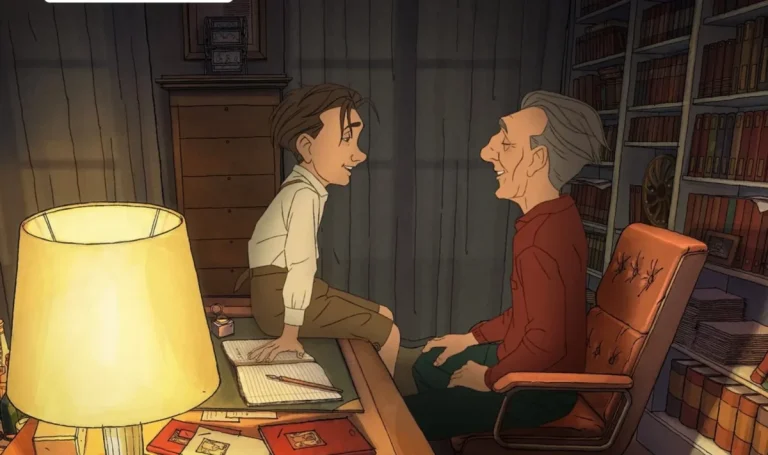I will be totally honest here. During the second/third chapter of Quentin Tarantino’s “The Hateful Eight” (2018), I somehow got bored and almost thought that this one might be a letdown in the end. Boy, I was wrong, and for that, I am so glad. Right before the end of the first half, QT gives a somewhat predictable yet shocking twist (I will come to this later in a bit of detail), and from there on, it all changes. The second half is clutching your edge-of-the-seat brilliant, but let me take a pause here and go back to the beginning.
Quentin Tarantino’s movies, while not flawless, are undeniably singular experiences. The Hateful Eight was a different beast altogether. The anticipation was almost unbearable; I’d been dreaming of seeing it on the big screen since its announcement. The temptation to succumb to leaked screeners was a daily battle. Finally, I surrendered to the cinematic gods and experienced it in a theater. It was a religious experience.
Tarantino’s penchant for chaptered storytelling is a hallmark of his work, and The Hateful Eight is no exception. The film opens with a snowy expanse and a stagecoach carrying a motley crew: Major Marquis Warren, a formidable Black bounty hunter, and John Ruth, “The Hangman,” a white bounty hunter with a prisoner in tow, the infamous Daisy Domergue. Ruth’s initial disdain for Warren is palpable, a reflection of the era’s racial tensions. However, a shared connection to Abraham Lincoln, cemented by a letter Warren carries, begins to thaw the ice between them.
In the second chapter, a man named Chris Mannix (Walton Goggins) joins them and asks them to take him with them, claiming himself to be the new sheriff of Red Rocks. Though unwilling at first, eventually, Roth takes him along. All four of them, along with the one riding the stagecoach, reach Minnie’s Haberdashery. There, they meet the Mexican Bob (Demian Bichir), claiming to be the temporary owner of the Haberdashery, and Oswaldo Mobray (Tim Routh), who claims to be the Hangman of Red Rock. There’s also Joe Gage (Michael Madsen), aka the quiet cowboy, and General Smithers (Bruce Dern), who hates black people. The all-important third chapter and the rest of the film take place here.

The middle portions of The Hateful Eight are slower-paced, serving primarily to establish the characters and setting. While essential for the later plot developments, these chapters can feel somewhat protracted. Tarantino, however, is a master of pacing, and he dramatically shifts gears midway through the film. The second half, introduced by a Tarantino narration, feels like a completely different beast, with the tension ratcheting up significantly.
The ensemble cast of The Hateful Eight is nothing short of phenomenal. Each actor delivers a powerful performance, thanks in part to Tarantino’s richly drawn characters. Samuel L. Jackson and Kurt Russell are the undisputed leads, delivering tour-de-force performances. Bruce Dern, Demian Bichir, Michael Madsen, and Tim Roth (whose role might have been intended for Christoph Waltz) are equally impressive. Even in a smaller role, Channing Tatum leaves a lasting impact.
Walton Goggins and Jennifer Jason Leigh are the true revelations of The Hateful Eight. Leigh’s performance is particularly astonishing and deserving of the highest accolades. The film’s haunting score, composed by the legendary Ennio Morricone, elevates the entire experience to a new level. Robert Richardson’s cinematography is as stunning as ever, but the film’s pacing suffers due to uneven editing.
Despite its flaws, The Hateful Eight is a grand, albeit overly long, mystery thriller with a Western veneer. While not as entertaining as some of Tarantino’s earlier work (excluding Death Proof), it’s still a commendable effort. Here’s hoping his ninth film surpasses this one.



![A Simple Favor [2018] Review: A Cocktail with Flavor](https://79468c92.delivery.rocketcdn.me/wp-content/uploads/2018/09/a-simple-favor-2018.jpg)
![MICerz [2022] Review – An unfunny film about the struggles of stand up comedians](https://79468c92.delivery.rocketcdn.me/wp-content/uploads/2022/04/MICerz-Movie-Review-1-768x432.jpg)
![La La Land [2016]: Magical, Exceptional and Utterly Beautiful!](https://79468c92.delivery.rocketcdn.me/wp-content/uploads/2016/12/la-la-land-768x511.jpg)
